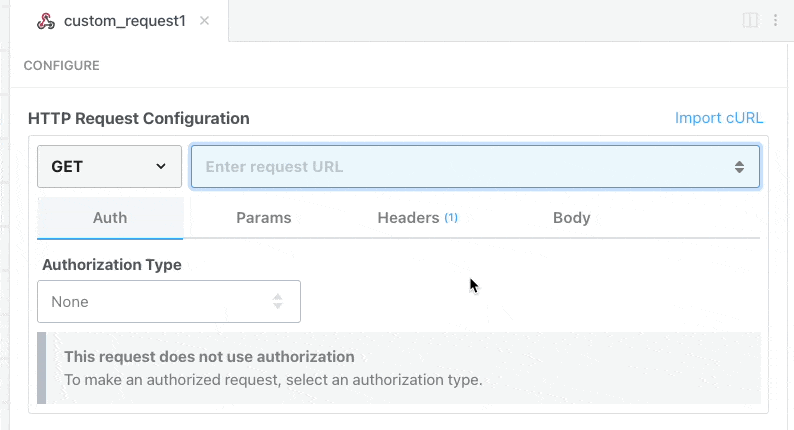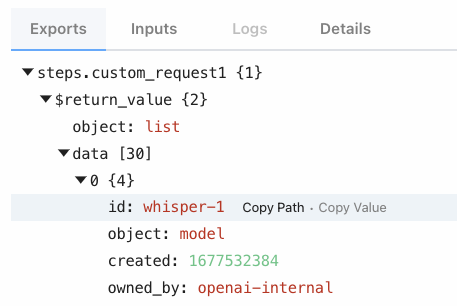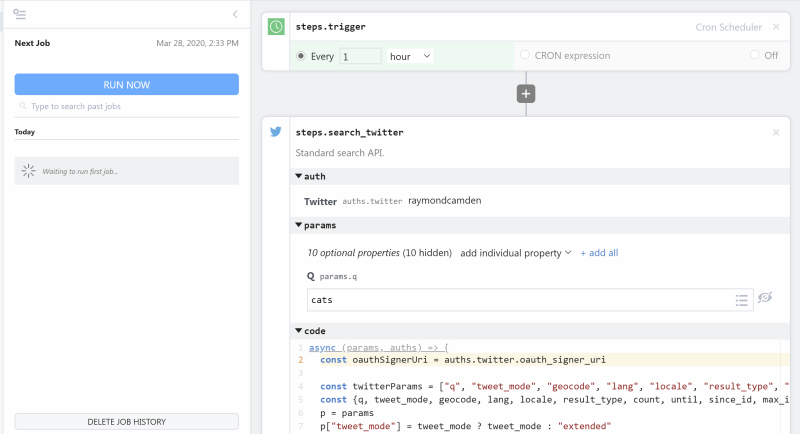What do you want to automate
with HTTP / Webhook and Browserless?
Prompt, edit and deploy AI agents that connect to HTTP / Webhook, Browserless and 3,000+ other apps in seconds.
Trusted by 1,000,000+ developers from startups to Fortune 500 companies
Popular Ways to Connect HTTP / Webhook with Browserless#
Popular HTTP / Webhook and Browserless Triggers#
Get a URL and emit the full HTTP event on every request (including headers and query parameters). You can also configure the HTTP response code, body, and more.
Get a URL and emit the HTTP body as an event on every request
Emit new event when the content of the URL changes.
Popular HTTP / Webhook and Browserless Actions#
Send an HTTP request using any method and URL. Optionally configure query string parameters, headers, and basic auth.
Send an HTTP GET request to any URL. Optionally configure query string parameters, headers and basic auth.
Overview of HTTP / Webhook#
Build, test, and send HTTP requests without code using your Pipedream workflows. The HTTP / Webhook action is a tool to build HTTP requests with a Postman-like graphical interface.

Point and click HTTP requests
Define the target URL, HTTP verb, headers, query parameters, and payload body without writing custom code.

Focus on integrating, not authenticating
This action can also use your connected accounts with third-party APIs. Selecting an integrated app will automatically update the request’s headers to authenticate with the app properly, and even inject your token dynamically.

Pipedream integrates with thousands of APIs, but if you can’t find a Pipedream integration simply use Environment Variables in your request headers to authenticate with.
Compatible with no code actions or Node.js and Python
The HTTP/Webhook action exports HTTP response data for use in subsequent workflow steps, enabling easy data transformation, further API calls, database storage, and more.
Response data is available for both coded (Node.js, Python) and no-code steps within your workflow.

Connect HTTP / Webhook#
// To use any npm package on Pipedream, just import it
import axios from "axios"
export default defineComponent({
async run({ steps, $ }) {
const { data } = await axios({
method: "GET",
url: "https://pokeapi.co/api/v2/pokemon/charizard",
})
return data.species
},
})
Overview of Browserless#
The Browserless API on Pipedream allows you to automate browser actions without the overhead of managing your own browser infrastructure. This service provides a way to run Chrome browser sessions programmatically, making it ideal for web scraping, automated testing, and screenshot capture. Leveraging this on Pipedream, you can create serverless workflows that interact with web pages, extract data, and perform actions as a human would, all in a scalable and efficient manner.
Connect Browserless#
import puppeteer from 'puppeteer-core@14.1.0';
export default defineComponent({
props: {
browserless: {
type: "app",
app: "browserless",
}
},
async run({steps, $}) {
// See the browserless docs for more info:
// https://www.browserless.io/docs/
const browser = await puppeteer.connect({
browserWSEndpoint: `wss://chrome.browserless.io?token=${this.browserless.$auth.api_key}`
})
const page = await browser.newPage()
const url = "https://example.com"
const type = "png"
await page.goto(url)
const screenshot = await page.screenshot()
// export the base64-encoded screenshot for use in future steps,
// along with the image type and filename
$.export("screenshot", Buffer.from(screenshot, 'binary').toString('base64'))
$.export("type", type)
$.export("filename",`${url.replace(/[&\/\\#, +()$~%.'":*?<>{}]/g, '_')}-${+new Date()}.${type}`)
await browser.close()
},
})Community Posts#

